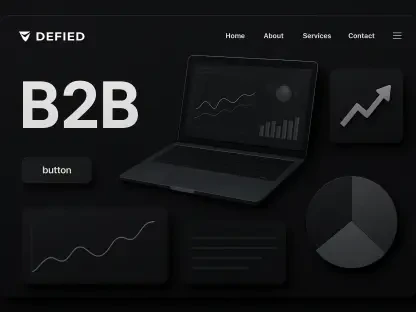Unveiling the Value of Affordable SEO Solutions
Imagine a small business owner, strapped for cash, watching competitors climb search engine rankings while their own website languishes on page five of Google results, struggling to gain visibility. The challenge of optimizing a site for better search engine performance seems daunting without a hefty marketing budget, yet it raises a critical question: can budget-friendly on-page SEO tools provide a lifeline for such businesses? This review aims to evaluate whether these affordable solutions are a worthwhile investment for marketers, small enterprises, and SEO professionals looking to enhance their digital presence without breaking the bank.
A pervasive stigma in the industry suggests that higher cost guarantees superior quality, often sidelining cheaper alternatives as inadequate. The purpose here is to challenge this myth by examining if low-cost tools can deliver real value. By focusing on core needs like content structure optimization, keyword usage, and technical site health, this analysis seeks to uncover whether these tools can meet essential SEO demands on a limited budget.
The scope of this exploration targets specific pain points faced by users with constrained resources. It addresses how these tools might bridge the gap for those unable to afford premium platforms, offering a practical pathway to improved search rankings. Through this lens, the effectiveness and relevance of budget options will come into sharp focus.
Overview of Budget On-Page SEO Tools
Budget on-page SEO tools are digital solutions designed to assist users in optimizing specific elements of a website that directly impact search engine performance, all at a fraction of the cost of premium software. These tools primarily focus on critical areas such as content quality, site structure analysis, and keyword management. Unlike broader platforms, their scope is deliberately narrow, targeting the essentials that influence on-page rankings.
Functionally, these tools operate by scanning web pages to identify issues like broken links, improper header usage, or keyword density imbalances. They provide actionable recommendations to refine content and improve user experience, often through straightforward dashboards or reports. This streamlined approach ensures that even those with minimal technical know-how can implement changes effectively.
What sets these tools apart is their affordability and accessibility, making them ideal for small teams, solo entrepreneurs, or startups. Their simplicity allows for quick adoption, often requiring little to no learning curve. This focus on core functionality over expansive feature sets positions them as practical choices for users prioritizing cost and ease of use over comprehensive, enterprise-level capabilities.
Performance Analysis of Practical Effectiveness
When put to the test, budget on-page SEO tools demonstrate varying degrees of effectiveness based on key performance criteria such as data accuracy, reliability of insights, and their capacity to pinpoint on-page issues. Many of these tools successfully flag common problems like duplicate content, missing meta descriptions, or suboptimal header structures. While their data might not be as exhaustive as that of premium counterparts, the insights provided often suffice for basic to intermediate optimization tasks.
Their ability to deliver actionable outcomes is particularly notable in specific areas. For instance, recommendations on keyword placement or content readability can directly enhance a page’s relevance to search engines. However, users must remain aware that the depth of analysis might be limited, sometimes missing nuanced issues that more robust platforms would catch. This gap often necessitates a degree of manual verification to ensure comprehensive optimization.
Limitations such as smaller data pools or less frequent updates can pose challenges, especially for dynamic websites requiring constant monitoring. To counterbalance this, combining tool-generated reports with hands-on analysis proves beneficial. This hybrid approach helps mitigate shortcomings, ensuring that critical SEO elements are not overlooked despite the constraints of budget software.
Weighing Strengths and Weaknesses
Among the primary advantages of budget SEO tools is their cost-effectiveness, offering essential functionality at a price point accessible to nearly any user. This affordability does not come at the expense of utility, as many tools provide focused features tailored specifically for on-page tasks like meta tag optimization or content structuring. Such targeted capabilities make them valuable for smaller projects or users with straightforward needs.
Ease of use stands out as another significant benefit, particularly for beginners or those managing limited scopes of work. The intuitive interfaces and simplified workflows reduce barriers to entry, enabling quick implementation of SEO best practices. This accessibility ensures that even non-experts can achieve meaningful improvements in site performance without extensive training.
On the downside, these tools often lack the advanced features found in higher-end solutions, such as in-depth competitor analysis or AI-driven suggestions. Interfaces may appear less polished, and data access can be narrower, restricting the depth of insights available. For startups, this might not pose a significant hurdle, but seasoned professionals with complex requirements may find these limitations restrictive, necessitating supplementary resources or manual effort to fill the gaps.
Summary of Value for Investment
Evaluating the performance, usability, and overall worth of budget on-page SEO tools reveals a compelling case for their adoption under the right circumstances. These tools consistently provide reliable insights for fundamental SEO tasks, ensuring that users can address critical on-page elements without financial strain. Their value for money shines through, especially for those with clear, limited objectives in mind.
Based on the criteria assessed, a recommendation emerges that these affordable solutions are indeed a smart choice for many. They excel in environments where budgets are tight, and the focus remains on core optimization rather than expansive strategy. This makes them particularly suitable for smaller entities or individuals seeking to establish a foothold in search rankings.
Alignment with specific SEO goals remains paramount when considering these tools. Selection should hinge on strategic needs rather than price alone, ensuring that the chosen solution matches the intended scope of work. When paired with a well-defined plan, budget tools can deliver substantial returns on a modest investment.
Final Thoughts on Ideal Users
Reflecting on the role of budget tools in the SEO landscape, it becomes evident that their strategic application unlocks significant potential for many users. Small businesses, solo entrepreneurs, and professionals handling routine tasks find these solutions to be indispensable allies in navigating the competitive digital space. Their capacity to address foundational SEO needs without overwhelming complexity proves to be a game-changer for those with limited resources.
Looking ahead, the next step for potential adopters involves a thorough assessment of project scope and personal expertise before committing to a tool. Consideration of how much hands-on effort can be dedicated to complement the software’s capabilities is crucial. For those willing to invest time in manual oversight, these tools offer a cost-effective foundation for growth.
Future strategies should also explore integrating these budget options with evolving SEO practices, ensuring adaptability to changing algorithms and trends. By viewing them as part of a broader toolkit rather than standalone solutions, users can maximize effectiveness. This approach paves the way for sustainable progress, empowering even the smallest players to carve out a meaningful online presence.









